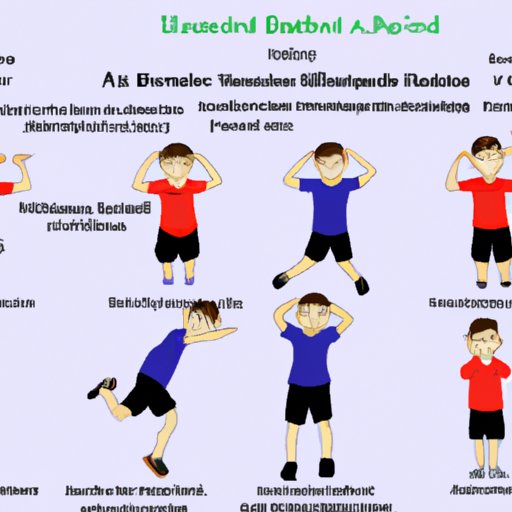Introduction
Attention Deficit Hyperactivity Disorder (ADHD) is a neurodevelopmental disorder that affects millions of people around the world. Symptoms of ADHD include difficulty paying attention, impulsivity, and hyperactivity. While traditional treatments for ADHD often involve medication, research has shown that exercise can also be an effective way to manage the symptoms associated with this disorder.

Exploring the Benefits of Exercise for ADHD
When it comes to treating ADHD, the benefits of exercise are twofold. First, physical activity can improve attention and focus for those with ADHD. This is because exercise increases blood flow to the brain, which helps to boost concentration and alertness. Additionally, physical activity can also be beneficial for reducing stress and anxiety, both of which are common issues for those with ADHD.
In addition to improving attention and focus, exercise can also help to reduce impulsivity, hyperactivity, and aggression in those with ADHD. Studies have found that regular physical activity can help to regulate emotions and behavior, leading to better self-control and more appropriate social interactions.

The Role of Exercise in Treating ADHD
So, does exercise help with ADHD? The answer is yes. Research has shown that physical activity can be an effective way to manage the symptoms of ADHD. Exercise can improve focus, reduce impulsivity and hyperactivity, and help to regulate emotions and behavior.
When it comes to treating ADHD, exercise should not be seen as a replacement for medication. Rather, it should be used in combination with other treatments. Studies have found that combining medication and exercise can lead to improved outcomes for those with ADHD.
Finding Regular Exercise to Manage ADHD Symptoms
For people with ADHD, finding ways to incorporate exercise into their daily routine can be challenging. However, there are some tips and strategies that can make it easier to get active.
First, it’s important to find activities that you enjoy. Even if it’s just a short walk around the block, taking time to do something that you enjoy can help to make exercise more enjoyable. Additionally, finding a partner or joining a class can make exercise more fun and keep you motivated.
It’s also important to set realistic goals. Start small and gradually increase the intensity and duration of your workouts. Setting achievable goals can help to keep you on track and prevent burnout.
Conclusion
Exercise can be a powerful tool for managing the symptoms of Attention Deficit Hyperactivity Disorder (ADHD). Physical activity can improve attention and focus, reduce impulsivity and hyperactivity, and help to regulate emotions and behavior. While exercise should not be used as a replacement for medication, it can be a valuable addition to other treatments for ADHD. For those struggling with this disorder, finding ways to incorporate physical activity into their daily routine can be a great way to manage symptoms and improve overall wellbeing.
If you or someone you know is struggling with ADHD, remember that you are not alone. There are many resources available to help you manage the symptoms of this disorder. Reach out to your doctor or mental health provider for more information and support.
(Note: Is this article not meeting your expectations? Do you have knowledge or insights to share? Unlock new opportunities and expand your reach by joining our authors team. Click Registration to join us and share your expertise with our readers.)
